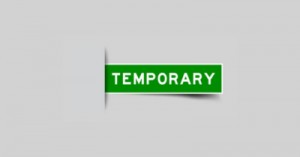National Quality Framework (NQF) presented the Annual Performance Report, 2021 on behalf of the Australian Children’s Education and Care Quality Authority (ACECQA). This report shows the impact of covid-19, on children’s health and safety, educational programs and practice, the effect on children from disadvantageous and vulnerable backgrounds, and how the workforce is working with intention of the well-being of children and with the public awareness of service quality.
It is known to us that the coronavirus (COVID-19) pandemic has impacted education and care service providers very miserably. Schools and child care providers are continuing in taking and implementing different strategies to maintain the health and safety of children, staff, and families, including the use of technology to provide ongoing learning and support for those children unable to attend services.
Impact Of Covid-19 On Children
-
More than a year from when the first case of coronavirus (COVID-19) in Australia, has been out in public to the invention of the vaccine and with the focus shifting to vaccine rollout in 2021, the children’s education and care sector continue to be significantly impacted by the global pandemic.
-
Education and care service providers, early childhood teachers, and educators have continued to adapt different measurements that will make no harm or little harm to the children, families, staff, teachers, and anyone related to the education sector. They tried different measures like using RAT, and well ventilation to gain the beliefs of the children and families.
-
The different reports said that children and families will be severely affected. Mental, physical emotional behavioral differences have been noticed among the student.
-
The report also said that the suffering had been widened because of widening disadvantages and deepening of existing inequalities as a result of the COVID-19 pandemic.
Child education sectors have tried to give access to high-quality education and care, particularly for children experiencing disadvantage, which will continue to be a key protective factor.
Children’s Health and safety
- The NQF tries to ensure the health and safety of all children attending education and care services. It is the service provider’s responsibility to ensure child protection and safety under the Education and Care Services National Law.
- It has been reported that In 2020/21, education and care service providers continued to implement new strategies to maintain the health and safety of children, staff, and families, and protect against the risk of COVID-19.
- As of 30 June 2021, 91% of services are rated Meeting NQS or above for children’s health and safety (Quality Area 2 of the NQS) which has been up from 88% one year ago.
- It also been reported that more than two-thirds (69%) of family daycare services are rated as Meeting NQS for children’s health and safety which is the highest proportion for more than five years.
Educational Program and Practice
- NQF has one of the prime objectives to improve the educational and developmental outcomes for children who are attending daycare and schools.
- It has been reported that the service of educational programs and practice has been increased to 90% as of 30th June 2021 and it has been increased from 87% a year ago.
- It has also been reported that almost two-thirds (64%) of family daycare services are rated Meeting NQS or above for educational program and practice which is the highest proportion for seven years.
- There is a high degree of correlation between performance against educational program and practice, and leadership, as well as between governance and leadership and assessment and planning.
Children From Vulnerable And Disadvantaged Backgrounds
- It is true that children from disadvantaged backgrounds are suffering a lot in the pandemic situation. They are more likely to be developmentally vulnerable and receive the greatest benefits from attending high-quality education and care.
- It has been shown in the report that the childcare service and children’s education in the most disadvantaged areas of Australia has increased to 84% in 2021 which was 78% in 2020.
- However, there remains a marked difference in the proportion of services rated Meeting and Exceeding NQS in the most advantaged areas compared to those in the most disadvantaged areas.
- Though the people are trying to decrease the gap between the advantageous and disadvantageous regions and trying to provide equal service to all of them.
- It has been reported that services located in regional and remote areas are also less likely to be rated Exceeding NQS. While 29% of services located in major cities are rated as Exceeding NQS, the proportion is 25% in outer regional areas and 14% in very remote areas.
Workforce
- NQF tried to improve educator-to-child ratios and educator qualifications, stipulated under the Education and Care Services National Regulations, to contribute to higher quality education and care.
- Proper training has been arranged to give the child more attention, to handle them more carefully in order to bring the good effect and to reduce the adverse effects of the pandemic.
- They have tried a lot and it has come to the light that 88% of family day care services are rated Meeting NQS or above for staffing arrangements which is the highest proportion for more than five years.
- National sector stakeholders and all Australian governments after being commissioned by the education minister have jointly and collaboratively designed a new ten-year children’s education and care national workforce strategy to support the recruitment, retention, sustainability, and quality of the sector workforce.
Public Awareness Of Service Quality
- One of the objectives of the NQF is to improve public knowledge and access to information about the quality of children’s education and care services. They are trying to increase public awareness.
- It is very important to increase awareness because it is one of the pillars to improve the quality of children’s service.
- Improvements have been shown when it comes to light the quality rating(s) of the service(s) that they use or intend to use, up from 54% in 2017 and 51% in 2019.
- Consistent with previous findings, location/accessibility remains a very important factor in education and care service decision-making. However, two service quality
- The National Quality Standard (NQS) is used by all state and territory governments to assess and rate services. The NQS sets a high national benchmark which is related to service quality. Due to rounding, individual percentages may not equate to 100%.
Reference:
NQF Annual Performance Report, ACECQA







 The Australian Government is rolling out unannounced spot checks across Early Childhood Education and Care (ECEC) services nationwide. This follows a successful pilot in October–November
The Australian Government is rolling out unannounced spot checks across Early Childhood Education and Care (ECEC) services nationwide. This follows a successful pilot in October–November Recent commentary has highlighted a striking statistic: 90% of new childcare providers in Australia are run for profit. This raises a fundamental question is this
Recent commentary has highlighted a striking statistic: 90% of new childcare providers in Australia are run for profit. This raises a fundamental question is this In April 2025, the Fair Work Commission (FWC) issued a provisional decision recommending staged award increases to address the undervaluation of early childhood educators; however,
In April 2025, the Fair Work Commission (FWC) issued a provisional decision recommending staged award increases to address the undervaluation of early childhood educators; however,